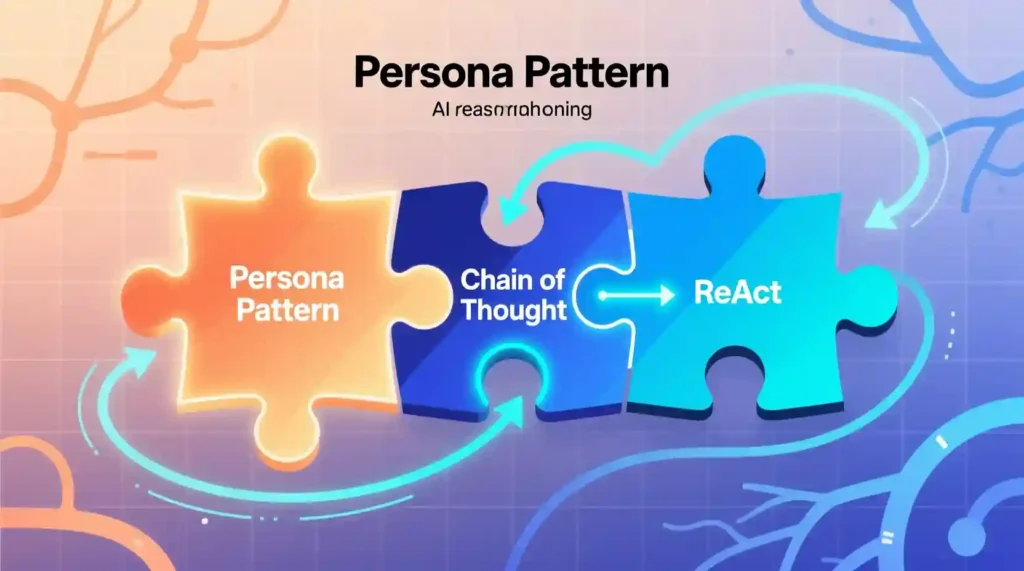
MASTER THE AI DIALOGUE: The Vanderbilt Prompt Engineering for ChatGPT Course Review
Stop Guessing: Why Hit-or-Miss ChatGPT Answers Are Costing You Time and Money
Let’s be real.
If you’ve ever sat staring at your screen after ChatGPT gave you a half-baked, generic answer, you know the feeling — the “ugh, not again” kind of frustration. You type your prompt, hit enter, and what comes back? Either a wall of fluff, or something so basic it makes you question your life choices. That’s the hit-or-miss game most people play with AI — and it’s eating up your time, focus, and mental energy.
You think you’re being smart with your prompts. But what’s really happening is guesswork — random trial and error — because no one ever taught you how to talk to AI properly.
That’s where Prompt Engineering for ChatGPT, Vanderbilt University’s powerhouse course, flips the game. This isn’t another “tips and tricks” tutorial. It’s a deep, structured system to make ChatGPT obey your brain. It turns vague, sloppy inputs into laser-focused outputs that save hours of rewrites, edits, and re-runs.
Once you get it, you stop gambling with AI and start directing it like a pro.
Meet the Expert: The Credibility Driving Vanderbilt’s Curriculum (E-E-A-T)

The course comes from Dr. Jules White, a name worth remembering if you’re serious about AI. He’s not a random YouTuber hyping buzzwords — he’s a Professor of Computer Science at Vanderbilt University, rated 4.8/5 by thousands of students.
Dr. White has been knee-deep in Generative AI, Large Language Models (LLMs), and AI reliability frameworks long before most people even knew what “prompt engineering” meant.
His approach is different — it’s science-backed, not influencer-styled. He doesn’t just teach “how to ask ChatGPT better questions.” He teaches you why the model behaves the way it does, how randomness shapes responses, and what patterns you can use to get consistent, creative, and trustworthy results every single time.
It’s not about making ChatGPT sound human. It’s about making you sound in control.
The Core Framework: Mastering the Grammar and Poetry of AI
What makes this course stand out is its Prompt Patterns — reusable templates designed to tackle real-world tasks. These patterns become your secret language with AI, letting you build anything from essays to automation scripts with confidence.

Module 1: Foundations and First Prompts (The Basics)
Here’s where you start learning the rhythm of the AI mind. You’ll discover why LLM outputs are inherently random, what that means for your prompts, and how to work with the system instead of against it.
Dr. White walks you through setting up your environment, understanding model parameters, and experimenting with simple prompt tweaks to feel how tone, role, and clarity shift results.
It’s like learning to tune an instrument — small adjustments make everything sing.
Module 2: Programming with Prompts (The Persona Principle)
Ever wonder why “act as an expert” prompts work so well? That’s the Persona Pattern.
It’s a psychological trick that instantly upgrades your outputs. By giving ChatGPT a defined role — say, “Act as a Speech Pathologist” or “Act as a Financial Advisor” — you shrink the gap between general AI knowledge and specialized insight.
You’ll also get hands-on with input constraints, prompt size limits, and chaining prompts for long-form or technical content. Once you understand these, ChatGPT stops being random and starts behaving like a precision tool.
Unlocking Emergent Intelligence: Advanced Prompting Techniques
This is where the magic happens — the jump from user to architect.
Module 3: Advanced Structure — Verification and Refinement
Here, you learn how to force ChatGPT to think before it speaks.
- Question Refinement Pattern: The AI learns to ask clarifying questions before it answers — like a real expert would.
- Cognitive Verifier Pattern: You train ChatGPT to check its own logic, verify claims, and explain reasoning transparently.
- Flipped Interaction Pattern: You reverse the flow — making ChatGPT quiz you to refine your goals.
These are not parlor tricks; they’re cognitive frameworks that make your outputs smarter, tighter, and more credible.
Module 4: Reasoning and Logic
This section is where most learners have their “holy crap” moment.
Dr. White introduces the Few-Shot Examples Pattern, which teaches the AI through examples instead of abstract instructions. Then comes Chain of Thought (CoT) Prompting, the art of getting step-by-step logical reasoning from the model.
And finally, ReAct Prompting — the hybrid method that blends reasoning and action. It’s the foundation of AI agents — the future of automation, where LLMs don’t just respond but decide what to do next.
Module 5: Creative and Domain-Specific Patterns
By now, you’ll be seeing AI as a creative partner, not a chatbot.
The Game Play Pattern transforms prompts into interactive simulations. Want to roleplay a client negotiation or a debate? Done.
Then come the Template and Recipe Patterns, your go-to for repeatable outputs — SEO outlines, product descriptions, business reports, or even weekly meal plans. You’ll learn how to “bottle creativity” so you can generate consistent results with zero burnout.
Automation and Application: Building Real-World Solutions
This is where you take everything you learned and apply it like a pro.
Module 6: Combining Patterns and Creating Applications
You’ll discover how to combine multiple patterns to build complex, multi-layered workflows.
Examples include:
- Using the Fact Check List Pattern to make ChatGPT verify its claims automatically.
- Applying the Semantic Filter Pattern to lock responses within certain boundaries — like brand voice or domain rules.
By the end, you’ll create a Prompt-based Application — a mini portfolio project that proves your ability to design, automate, and direct AI for real business or creative use.
This isn’t just a certificate. It’s proof that you can build intelligent workflows from scratch — a skill every company will crave in the next five years.
Enrollment and Logistics: What You Need to Know

- Duration: Around 18 hours (you can finish it in a week or stretch it out).
- Level: Beginner-friendly — no coding needed.
- Cost: Free to audit, or pay for certification via Coursera.
- Requirements: Just your curiosity and a ChatGPT Plus account for better model access.
It’s designed for anyone — from content creators and freelancers to engineers and business strategists — who want to finally stop guessing and start engineering.
From Learning to Doing: Applying Patterns in Real Life
By the time you reach the final modules, you realize that Prompt Engineering for ChatGPT isn’t just academic — it’s intensely practical. Every pattern you’ve learned becomes a building block in your creative toolkit.
I remember the first time I tried combining Persona Patterns with Chain of Thought Prompting. I was trying to draft a detailed marketing plan in under five minutes. The first run was messy. The AI stumbled. But with refined prompts, step-by-step logic, and self-verification, the output went from generic to genius. It was like the AI finally understood me, not just my words. That’s the real shift this course creates — you stop guessing and start directing.
Advanced Creative Control: Beyond the Basics
The beauty of Vanderbilt’s approach is that it turns chaos into a playground. With Template Patterns and Game Play Patterns, I could experiment with scenarios I never imagined:
- Simulating client calls to prep for real-life meetings.
- Generating multiple variations of content for A/B testing.
- Creating reusable frameworks for reports, lesson plans, and project proposals.
And the more you practice, the more the AI starts to feel like an extension of your own thought process, rather than a random, unpredictable tool.
Real-World Automation: Making AI Work for You
This course doesn’t stop at writing prompts — it shows you how to make AI reliable and autonomous.
I applied the Fact Check List Pattern to automate verification for research tasks. Suddenly, what used to take hours of cross-referencing took minutes. Using the Semantic Filter Pattern, I could make ChatGPT stick to precise topics, reducing errors and wasted time.
These aren’t hypothetical exercises — they’re workflows you can deploy immediately. Freelancers, content creators, and small business owners can literally save hundreds of hours a year. For me, it felt like finally catching up with a tool that’s already shaping the future of work.
Who Should Take This Course?
Honestly, anyone who interacts with AI should. But the best users are:
- Content creators who want consistency without burnout.
- Business strategists and analysts who need accurate, actionable outputs.
- Educators and researchers using AI to streamline workflows.
- Curious lifelong learners who want to future-proof their skills.
If you’re tired of wasted time and mediocre results, this course is a shortcut to mastery.
The Emotional Upside: Confidence and Creative Freedom
Here’s the thing: learning prompt engineering is not just about efficiency. It’s about reclaiming creative confidence.
I’ve seen people freeze, staring at a blank page, unsure what to ask AI. After working through Vanderbilt’s course, you realize: it’s not the AI that’s the problem. It’s how you ask. Once you master the patterns, the hesitation disappears. You stop second-guessing, and your ideas flow freely — amplified by AI, not restrained by it.
The course isn’t just teaching prompts; it’s teaching you a new way to think, structure, and communicate ideas. That’s priceless.
Enrollment and Logistics Recap
- Duration: ~18 hours, self-paced.
- Cost: Free to audit, paid certificate optional.
- Requirements: Basic computer skills; ChatGPT+ recommended.
Everything is set up so you can focus on learning to engineer AI conversations, not on technical hurdles.
Conclusion: Go Beyond the Basics and Future-Proof Your Skills

Here’s my blunt take: if you care about staying relevant in a world increasingly run by AI, Prompt Engineering for ChatGPT is non-negotiable.
This course doesn’t just teach you to “use AI” — it teaches you to lead AI. You learn to:
- Turn chaotic outputs into precise, structured answers.
- Build reusable frameworks for productivity and creativity.
- Automate verification, filtering, and reasoning workflows.
- Step confidently into the future where AI literacy equals power.
I’ll be honest: mastering prompts changed how I approach work, creativity, and problem-solving. It made me faster, more precise, and — weirdly — more human. Because when AI can handle the mundane, your brain gets space to explore the messy, soulful parts that machines can’t touch.
Final Thought: Prompt Engineering for ChatGPT, isn’t optional anymore. It’s the new literacy. Take this course, embrace the patterns, and watch your AI outputs stop being random and start being extraordinary. Vanderbilt’s curriculum is your bridge from AI consumer to AI director — and trust me, once you cross it, there’s no going back.
